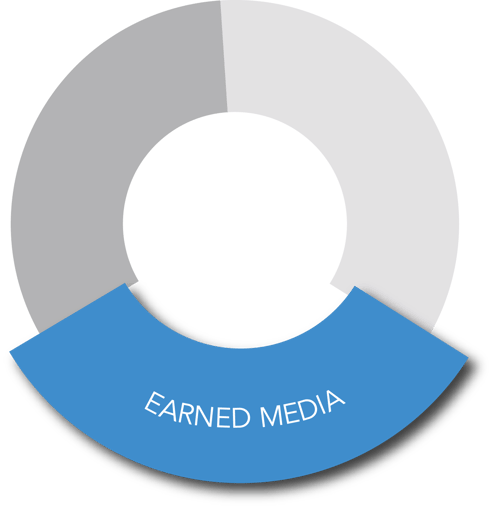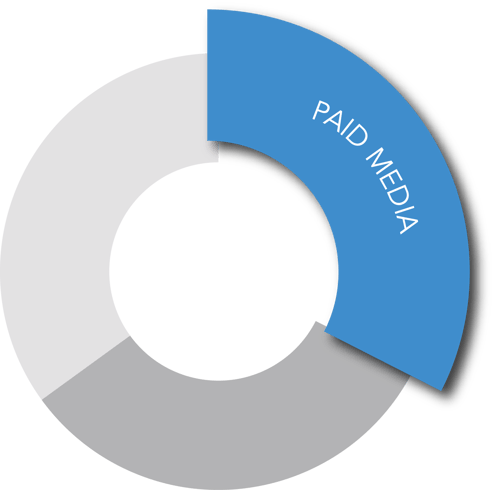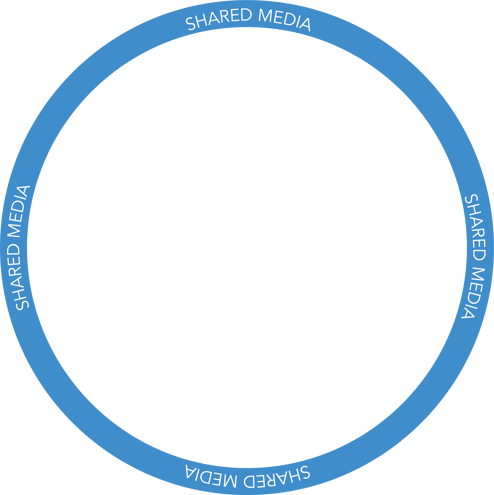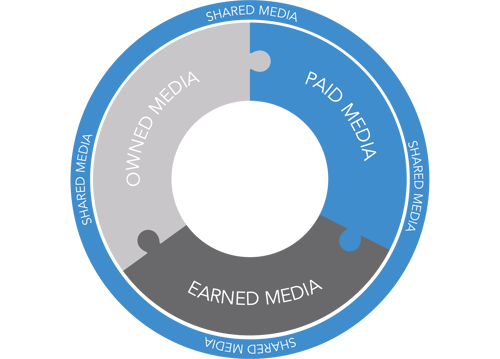An effective PR strategy can help raise the profile and visibility of a brand or business within its relevant media and, as a result, reach and influence customers, prospects and other key stakeholders.
But while PR tactics of the past relied on newspaper or broadcast placements, today’s PR must go beyond these traditional forms of media to be truly effective in the modern era.
High quality digital content has a global reach and audiences want to educate and inform themselves through multiple media channels. The traditional model of PR only achieves one goal when there are so many others to consider.
Modern PR strategies now form part of a much wider Inbound strategy and PR consultancies must be able to create and implement campaigns which are more sophisticated and take into account much more than hurling news releases at journalists.
The “Inbound PR” model takes the best parts of traditional public and media relations - producing news and features for targeted press - embeds it within a much larger media strategy which also incorporates a business’ Owned and Earned media channels and actively seeks to Share interesting content and engage with audiences to create a synergistic, strategic and ultimately more effective campaign.

Earn the right to get your brand, business and spokespeople featured in key media and raise your profile and reputation among your target audience as an industry thought-leader. It’s not easy, but with the right
While digital has expanded the scope of Earned media beyond just print publications, an effective Inbound PR campaign still relies heavily on building journalist contacts, understanding the fundamentals of what makes a story and - more importantly - why anyone should care about it.
Whether it is producing press releases [you can download our free press release template here to get you started] creating thought leadership articles, securing interviews for spokespeople, or creating market research reports to provide insights into your industry, a well planned and executed Earned media campaign can get you noticed by your target audience.

While they are still important, journalists and media brands are no longer the sole gatekeepers to getting your business’ message out in front of your audiences.
Building a website to host a blog and effectively managing social media accounts like LinkedIn or Twitter are all within the reach of any business and provide the perfect platforms to get your key messages out in front of your prospects, customers and journalists in an unfiltered way.
Making the most of these Owned media channels will allow you and your business to publish views and engage your industry in worthwhile dialogue. Use search engine optimisation to drive online visitors to your content and expand and amplify your messages to a wider audience using social channels like LinkedIn, Twitter, YouTube and even Instagram and Facebook.
These channels can allow your business to operate as its very own newsroom and engage your audience directly.

While Earned and Owned media can help you increase your business’ profile and audience reach organically, it never hurts to pour a bit of fuel on your Inbound PR fire and using Paid media to help amplify your reach even further.
Paid media doesn’t have to be a huge investment, but a well thought through Paid media plan can be a clever addition to your Inbound PR campaign. Running a Paid media campaign on Google Adwords around your key new products and services can boost web visitors and capture real interested prospects to your site.
Similarly, using sponsored updates on LinkedIn can help you target your content much more specifically towards a particular audience - whether you wanted to target them by interest, job title or industry, Paid search allows you to be much more targeted in your promotion.
Paid media can also help you boost your organic results - like promoting an already popular Tweet to

Shared Media is the final piece of the Inbound PR puzzle. A big mistake of PR that many companies commit, and too many PR consultancies encourage, is to only share news and articles that relate to them. How many times have you seen a company tweet something like: “Check us out in XX publication today".
This not very subtle attempt at self promotion can become a bit grating after a while. Sharing content isn’t just about raising awareness about your own business, it is about generating continual engagement with your audience - including journalists and media outlets.
The Shared element of Inbound PR is about promoting articles that your audience might find interesting and being sure to engage with journalists over social media, highlighting their work and thanking them publicly when they do feature you.
PR is not a one-way street of self-promotion whilst ignoring anything that doesn’t feature you; it’s about creating a two-way street of communication and becoming known as a great source and promoter of interesting and informative content.
Any good PR campaign can deliver you bucket loads of coverage - at least it should do. But when planning an Inbound PR campaign, businesses have much more to consider and many more avenues to explore to get their message out there using every element of Earned, Owned, Paid and Shared media.
All of these channels open up more opportunity to engage with your target audiences, which today are not just limited to customers and prospects. New media channels mean businesses now have the potential to communicate and engage directly with journalists, bloggers, analysts, investors, partners or vendors and employees.
Today, you have to consider that your business is a publisher in its own right, it’s not just about engaging with publications. Along with media engagement, you must be able to take advantage of the ability to publish your content on your own digital shop window - your website.
Knowing who your campaign is aimed at is the most fundamental part of any communications strategy. Afterall, if you don’t know who you’re talking to, how are you going to communicate effectively?
By developing a buyer persona (a fictional generalised representation of your ideal buyer) you can start to identify what kind of media they consume and plan which journalists, publications or websites should form part of your media outreach strategy.
This buyer persona can also help you to understand the habits and problems of your ideal buyer, which can be vital when it comes to planning what blog content to write, which social channels to use to promote it and what types of articles you should be looking to share.
The same method can be applied to creating a media persona. This will help you identify how your target journalist likes to be contacted, what news they cover, how they source their information, what interests them and how you can position your business in front of them.
.png?width=304&name=users-group%20(1).png)
Whether you’re engaging with prospects, customers or the press, one thing all media channels have in common is that they are pointless without content – good, engaging, well considered and well written content.
Journalists or bloggers won’t care about your business unless you’re providing them with interesting information that they want to publish. Prospects and customers won’t see your business as credible and informative if you just try and sell, sell, sell your products to them.
Without useful, thought-provoking blogs and articles that do a lot more than just talk about you, your website may as well be barren. Your social media channels will remain unfollowed and unloved unless you actively interact with and share relevant ideas with your target audiences - and not just your own ideas.
.png?width=337&name=content%20(2).png)
We had the pleasure of spending time with Iliayna Stareva at HubSpot's Inbound 2018 conference in Boston. Watch our video below where our CEO, Bob Dearsley discusses all things Inbound PR!
This doesn’t mean you have to run out and create vast amounts of content from scratch or start promoting the competition.
The first thing to do is conduct a content audit of your website and social channels and compile the results of any previous PR or marketing content to get an idea of what you’ve already got. More importantly - what has and hasn’t worked in the past.
If you’ve had success getting in your target press before, what kind of articles were you submitting? If you’ve had blogs which performed well in the past, what topics did they cover? And can you reuse them across your different channels?
Once you get to grips with this, you can move on to creating new stories.
Getting to the crux of a good story and understanding the key Who, What, When, Where and Why remains the essential element for creating great content that journalists will want to use. Making journalists understand why they should care about your story is key.
When it comes to creating content for your own website and social media channels, there is one key thing to remember. As harsh as it sounds, your prospects don’t care about you. They care about whether you understand their problems and, importantly, how you can help them overcome them.
You will need all of this content to create an effective Inbound PR campaign.
Historically PR agencies measured campaign performance based on the quantity, or quality, of appearances in the media. But this is far from enough, in fact it is highly questionable to present a set of metrics based on possible impressions or equivalent advertising spend.
Return on investment today must be based on factual and provable impact.
Inbound PR uses digital metrics like Google Analytics and goal setting, along with other digital tools, to measure exactly how any PR activity is impacting your business’ online visibility and overall business objectives.
Clear reporting should give you the ability to track website visitors (both new and returning), measure success of a particular article or asset, see how your social media accounts are growing, what level of activity and engagement your posts have generated, as well as to know which channels or outlets are driving traffic to your website.
Remember that your website meets your prospects before you do, so careful tracking and measurement of your website is the key to the success metrics of your business.
The Inbound PR methodology can help you understand how an individual campaign and your wider PR and marketing activity is performing against your business’ overall goals.
Historically public relations and marketing have operated in siloes - even as each discipline embraced the new digital tools at their disposal.
Inbound PR is a step towards breaking down these barriers and creating a synergistic approach to creating and distributing messages.
Through a combination of creating and distributing articles and other content to generate Earned media and amplifying these results by creating or repurposing content across Owned and Paid channels, Inbound PR can become an extension of your current marketing activity, ensuring you get value and measurable results at every stage.
By further boosting your efforts using Shared media tactics, you can also start to become known as a key source of valuable industry information and insight. When it comes time to pick a supplier, are prospects more likely to go with the self-centred always promotional company? Or the one that has been sharing helpful information with them for the past few months?

Public relations isn’t new. Content Marketing isn’t new. Blogging isn’t new. Using social media isn’t new.
Bringing these different tactics together as part of Inbound PR is new.
Inbound PR is the closing of the gap between traditional PR and digital marketing. It is making PR [what has historically been an impossible to measure discipline] more accountable to those paying the bills.
For too long PR has been about masking the lack of accountability in measurement. Agencies have long tried to perplex clients using jargon such as Advertising Value Equivalent, media impressions, potential reach and other ways of describing vanity metrics. These look good on a coverage sheet but offer no tangible business benefit.
Inbound PR changes the tactic of news distribution from “spray and pray” and focuses on actual media relations. This is achieved by using the same principles used in marketing when creating a buyer persona to better understand the demands of journalists. After all, journalists are the customers of PR professionals - isn’t it about time we moved away from interruptive tactics?
A well constructed media persona can not only help you understand what kind of content journalists are likely to be interested in, but can also give you a much better idea of how to contact them.
Whether this is personalising emails (lesson 1: journalists hate receiving emails with simply “Hi” or “Dear Sir/Madam”) or using a completely different form of communication such has Twitter or LinkedIn. A well researched media persona can add fuel to your journalist outreach.
Inbound PR is the evolution of B2B PR, but it retaines the core principles of content creation and media relations. As Iliyana Stareva, author of the book ‘Inbound PR’ says, “Inbound PR combines the best of two worlds (Public Relations and Inbound Marketing) and alleviates PR's biggest weakness (measurement) and Inbound's biggest challenge (content).”